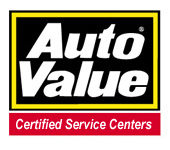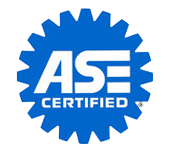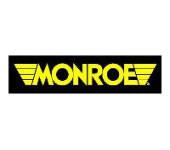
Archive for September 2025Don?t Blow Your Cool (Water Pump Replacement)Posted September 28, 2025 3:41 AMIt’s always a good idea to keep your cool, and that’s especially true when it comes to some components of your vehicle. One is the engine. It’s hot under that hood thanks to the mini explosions that are occurring in the internal combustion engine when it’s running. Your vehicle has a cooling system which takes the heat out of the engine by moving a liquid coolant to a spot where the heat can escape (the radiator). The part that keeps that coolant moving is the water pump, which could probably be more accurately called the coolant pump since water is only one component of the fluid that does the cooling. If the water pump fails, your engine can overheat quickly, and that can cause significant and expensive damage to your vehicle. Water pumps can be driven by belts (mechanical) or electricity (electric). Your vehicle’s manufacturer recommends mileage intervals when you should consider replacing your water pump even if seems to be working fine. That way you are less likely to have a water pump break down at an inopportune time. Some manufacturers recommend replacing it every 60,000-100,000 miles/100,000-160,000 km. Sometimes your water pump will fail before that, of course. One sign something is wrong with the cooling system is if you notice the engine is overheating. An illuminated engine temperature warning light on your dash or a temperature gauge that shows above normal are two things to look for. You may also see steam coming out of the engine compartment, which is another sign of overheating. Both could mean your water pump needs replacing. We also recommend that when your vehicle’s timing belt needs to be replaced that you have the water pump replaced at the same time since everything will already be apart. When your vehicle is already in to have the water pump replaced, it’s a good time for a technician to examine other cooling system components at the same time. Those will include belts, pulleys, hoses, clamps as well as the radiator, thermostat and heater core.
A Clean Sweep (Fuel Injector Cleaning)Posted September 21, 2025 3:43 AMYour vehicle gets its power from burning fuel, usually gasoline, and it counts on something called fuel injectors to send gas to the engine in a spray that is easy to ignite. It’s a precise operation, and when it’s working well, you have plenty of power and an efficient engine. But after time, contaminants in the fuel system may prevent the injectors from spraying like they’re supposed to. They can also shoot contaminants into the engine. One sign that could point to dirty fuel injectors is a misfiring engine. Misfires can be caused by several things, so it’s a good idea to bring your vehicle to us so we can trace the cause. Another sign is that your fuel economy has gone downhill or your engine doesn’t have the “pep” it used to. If we discover that your injectors are clogged or not working the way they should, we can clean them to get rid of those contaminants to restore your engine to its top performance. When you bring your vehicle to us, we will connect the flushing equipment, flush out the injectors and reassemble the system. A good time to have fuel injectors inspected is when you bring your vehicle in for routine maintenance. An oil change is an ideal time to have a technician take a close look at your entire fuel delivery system. When you have your fuel injectors cleaned, you may see your mileage go up, your engine performance improve, and your exhaust emissions decrease. Brake World A Bright Spark (Ignition Coil Replacement)Posted September 14, 2025 3:41 AMEver wonder how your vehicle’s engine is able to take the 12-volts from its battery and ramp that up to as high as the tens of thousands of volts it takes to fire its spark plugs? The secret is something called an ignition coil. Most newer vehicles have an ignition coil at each cylinder, but older ones have a coil that serves all of the spark plugs. There are telltale signs that you have an ignition coil problem. As you might expect, one symptom is it’s hard to start your engine or it won’t start at all. If your engine is misfiring or not running smoothly or you see the Check Engine light come on, those all could point to an ignition coil failure. Several things can contribute to ignition coil trouble in addition to normal wear and tear. Moisture and dirt may have gotten inside the coil, plus the heat and vibration of your engine over time can contribute to them going bad. Bad spark plugs or plug wires can also be a cause. While ignition coils can last 100,000 miles/160,000 km, depending on how you drive and in what conditions. If you start noticing some of the signs and symptoms just described, it’s a good idea to schedule a visit to see us so a technician can diagnose what’s wrong. Driving too long with an engine misfiring can damage your catalytic converter, and that can be expensive to replace. A technician will thoroughly check your ignition system and determine where the failure is. If it’s only one coil that’s bad, it may be the only thing that will need replacing. If your vehicle has a distributor, it may also need to be replaced. Properly-working ignition coils will help your vehicle operate at its best and help prevent future engine damage. Brake World Bad Vibrations (Brake Rotor Replacement)Posted September 7, 2025 3:52 AMIf you’ve ever stepped on your brake pedal and felt your vehicle vibrate, that’s a signal that you shouldn’t ignore. A pulsating brake pedal is a sign that something is wrong. Braking action should be smooth, sure, and quiet, not shaky and noisy. Most newer vehicles have disc brakes, called that because they have a round, flat disc connected to each wheel. Those discs are the rotors. Other parts called brake pads are squeezed against those discs when you press on the brake pedal. Remember that vibration we mentioned? That can be caused by the rotor not having a straight, true surface. Rotors can heat up from friction and warp. They can become thinner from constant wear. Rotors can rust from the elements they’re exposed to, such as rain, snow ice, and salt. They can get grooves in them from so many contacts with the pads. The signs of worn rotors are vibrations, grooves on the rotor (which you can see sometimes through open spots in the wheel) noise such as squealing or scraping when you brake, and increased stopping distance. While it used to be common for rotors to be machined (shaved down to restore their flat surface), newer vehicles have thinner rotors, so your service adviser may suggest you replace rotors when they start showing signs of significant wear. Brakes are important safety equipment for every vehicle. They enhance your control while driving, so it’s important that they be regularly inspected and maintained. A good time is when you have your tires rotated. A technician can then look at all components of your brakes and recommend any service you may need to keep your brakes in top shape. Brake World | ||
SearchArchiveNovember 2018 (16)December 2018 (5) January 2019 (5) February 2019 (4) March 2019 (5) April 2019 (4) May 2019 (4) June 2019 (5) July 2019 (4) August 2019 (4) September 2019 (5) October 2019 (4) November 2019 (4) December 2019 (5) January 2020 (5) February 2020 (4) March 2020 (5) April 2020 (4) May 2020 (5) June 2020 (4) July 2020 (4) August 2020 (5) September 2020 (4) October 2020 (4) November 2020 (5) December 2020 (4) January 2021 (6) February 2021 (4) March 2021 (4) April 2021 (4) May 2021 (5) June 2021 (4) July 2021 (4) August 2021 (5) September 2021 (4) October 2021 (5) November 2021 (4) December 2021 (4) January 2022 (6) February 2022 (4) March 2022 (4) April 2022 (4) May 2022 (5) June 2022 (4) July 2022 (5) August 2022 (4) September 2022 (4) October 2022 (5) November 2022 (4) December 2022 (4) January 2023 (5) February 2023 (4) March 2023 (4) April 2023 (5) May 2023 (4) June 2023 (4) July 2023 (5) August 2023 (4) September 2023 (4) October 2023 (5) November 2023 (4) December 2023 (5) January 2024 (5) February 2024 (4) March 2024 (5) April 2024 (4) May 2024 (4) June 2024 (5) July 2024 (4) August 2024 (4) September 2024 (5) October 2024 (4) November 2024 (4) December 2024 (5) January 2025 (4) February 2025 (4) March 2025 (5) April 2025 (4) May 2025 (4) June 2025 (5) July 2025 (4) August 2025 (5) September 2025 (4) October 2025 (4) November 2025 (5) December 2025 (1) | CategoriesFuel Economy (6)Maintenance (8)Brakes (11)Tires and Wheels (2)Timing Belt (3)Fluids (5)Battery (10)Headlamps (4)Alternator (6)What Customers Should Know (49)Cooling System (6)Service Standards (3)Customer Detective Work (1)Check Engine Light (2)Service Intervals (1)Exhaust (4)Fuel Saving Tip: Slow Down (1)Suspension (1)Shocks & Struts (3)Alignment (4)Oil Change (5)Tires (9)Windshield Wipers (1)Safety (2)Air Conditioning (7)Automotive News (2)Older Vehicles (1)Drive Train (3)Wheel Bearings (1)Steering (5)Cabin Air Filter (1)Transmission (2)Tire Rotation and Balancing (3)TPMS (2)Brake Service (5)Auto Safety (2)Keys to a long lasting vehicle (1)Safe Driving (1)Shocks and Struts (2)Fuel System (2)Transfer Case Service (1)Dashboard (1)Inspection (2)Winter Prep (1)Battery Replacement (1)Differential Service (1)Water Pump (1) | |
What our clients are saying about us
We have established longterm and stable partnerships with various clients thanks to our excellence in solving their automotive needs!
Called the shop early Saturday Morning. I wanted an oil change and my tires rotated. I was told come in before noon. I did. I thought I would be there all day. But to my surprise it only took 40 minutes. They changed oil n filter, lubricant all grease fittings, tapped off fluids, checked tire pressure and rotated my tires. That was a great package deal 69.99. I will be back. Customer Service was great! No appointment necessary even on a Saturday.
I was able to come off the street and get an oil change without an appointment. Very impressed with the service and quick turn-around time. I will definitely come back for future oil changes.













